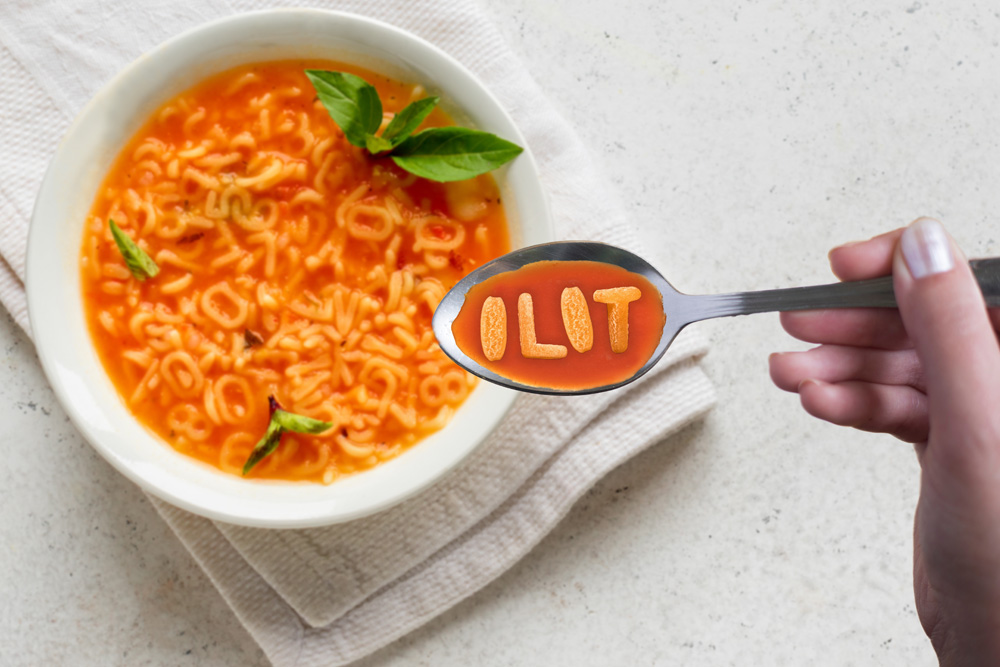CRUTS, TISTs, and SLATS? The world of estate planning can often be complex to navigate, and there are dozens of acronyms that are used by estate planning professionals. Please find our “Alphabet Soup” of estate planning menu to help you learn the meanings behind frequently used acronyms. Though it is not a comprehensive list, an understanding of these terms may make the estate planning process more appetizing.
Menu of Common Trust Acronyms
BDIT
- A Beneficiary Defective Inheritor’s Trust is an irrevocable trust settled by a third party which is not treated as a separate entity for income tax purposes, but rather is removed from the donor’s estate for tax purposes. This trust allows the grantor to exercise some degree of control over the assets in the trust, while also utilizing the asset protection benefits that an irrevocable trust provides.
CLAT
- A Charitable Lead Annuity Trust is an irrevocable trust that allows a grantor to select a charity, donor-advised fund, or a foundation to receive annual payments. This trust allows the payments to be set for a term of years, or for the duration of the grantor’s lifetime.
CLUT
- A Charitable Lead Unitrust is an irrevocable trust that allows an individual to give a variable annual amount to charity for a fixed term of years, or for the life of one or more individuals. This unitrust is a fixed percentage of the net fair market value of trust assets, valued at least annually, usually using the first business day of the calendar year.
CRAT
- A Charitable Remainder Annuity Trust is an irrevocable trust in which the trustor contributes assets to the trust, which then donates to one or more charities. A CRAT may be designed to benefit an individual beneficiary as well. In a CRAT, the individual beneficiary receives a fixed income or fixed dollar amount, or an “annuity.”
CRUT
- A Charitable Remainder Unitrust is an irrevocable trust which provides for a set percentage of the value of the trust principal be distributed to the beneficiaries for a term measured in years or based on one or more lives. At the end of the designated period, the remaining trust balance is distributed to one or more charities.
GRAT
- A Grantor Retained Annuity Trust is an irrevocable trust that is created for a fixed period, in which assets are placed in the trust, and then a predetermined amount (“annuity”) is paid to the grantor. Any assets that are remaining in the trust at the grantor’s death will pass to the beneficiaries.
ILIT
- An Irrevocable Life Insurance Trust is an irrevocable trust that is created to own one or multiple life insurance policies, allowing the proceeds of the policy itself to bypass probate and estate taxes when the insured grantor passes away. The trust itself is the owner and payor of the life insurance policy or policies that are held in the trust. The grantor typically pays into the trust, and the trustee pays the life insurance premiums. When the grantor dies, the beneficiaries of the ILIT receive the insurance payout.
QTIP
- A Qualified Terminable Interest Property trust is an irrevocable trust that pays annual income to the spouse for life, does not have any other beneficiaries during the spouse’s life, and upon the spouse’s death, passes the assets to the named beneficiaries. QTIP trusts are designed to maximize a couple’s applicable exclusion amounts while qualifying for the marital deduction.
QPRT
- A Qualified Personal Residence Trust is an irrevocable trust established to hold the personal residence of the grantor for a designated term of years, during which time the grantor may continue to use the residence on a rent-free basis. At the end of the term, the residence is transferred outright to the remainder beneficiaries at a reduced transfer tax cost. A QPRT effectively allows a trustor to remove their home from their taxable estate to reduce the overall amount of gift taxes that will be incurred by the beneficiaries.
SLAT
- A Spousal Lifetime Access Trust is an irrevocable trust in which one spouse transfers their assets to benefit the other spouse and potentially other family members, usually descendants. Upon the death of the donor spouse, the beneficiary spouse will receive the assets remaining in the trust. Importantly, these assets are excluded from the donor spouse’s estate for tax purposes.
TIST
- This is Tennessee’s version of a domestic asset protection trust (DAPT). Tennessee is one of only 17 states that offer this trust type. A TIST is an irrevocable trust that allows the trustor to have significant control over the assets held in the trust, while providing protection from future creditors. This trust is unique in that it is irrevocable, but still allows for a high degree of trustor control. One limitation to a TIST is that the trust generally remains within the trustor’s taxable estate due to the trustor’s ability to receive distributions.
TING
- A Tennessee Incomplete Non-Grantor Trust is an irrevocable trust that is established in Tennessee but is done so by an out-of-state resident. The trust is required to pay federal taxes. A TING is structured as a non-grantor trust for federal income tax purposes but is funded with transfers from the grantor that are treated as incomplete gifts for gift tax purposes.
DAF
- A Donor-Advised Fund is a charitable giving vehicle administered by a third party that is created for the purpose of managing charitable donations. Any distributions from the fund must go to approved charitable organizations. DAFs may also deliver tax and timeline benefits.
HEMS
- Health, Education, Maintenance, and Support (“HEMS”) provisions in a trust document are a way of guiding the trustee in making distributions to a beneficiary. These provisions allow the trustee to exercise a degree of discretion, so long as the distribution is for one of these categories. HEMS provisions are common in trust documents.
IRA
- Individual Retirement Accounts are investment accounts that an individual owns and contributes to, and at age 73, the individual is required to start taking Required Minimum Distributions (see RMD definition). A trust may be named as the beneficiary of an IRA account to hold the account as an asset of the trust upon an individual’s death.
POA
- A Power of Attorney allows a person or entity to legally act on behalf of another, and the powers can be vast, or highly specific to a stated purpose. Generally, a POA will only be valid while the person who executed it is living.
RMD
- Required Minimum Distributions are the minimum amounts you must withdraw from your retirement accounts each year. IN general, Individuals must start taking withdrawals from retirement accounts upon turning 73.
TOD
- Transfers On Death accounts automatically transfer the assets from the account to a named beneficiary when the account holder dies. These accounts allow families to avoid probate proceedings. TOD accounts allow the settlor of the account to change the beneficiaries up until the settlor dies.
Pendleton Square guides generations forward and provides an unsurpassed client experience. We welcome the opportunity to help you meet your estate planning goals.



